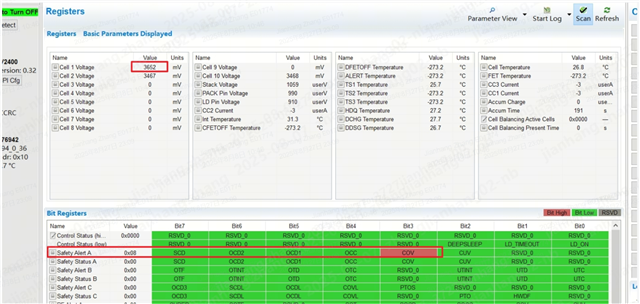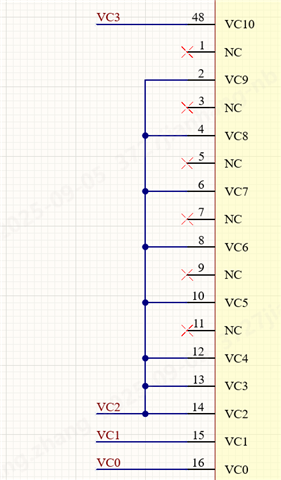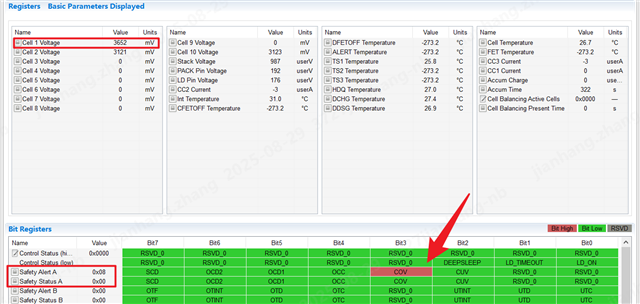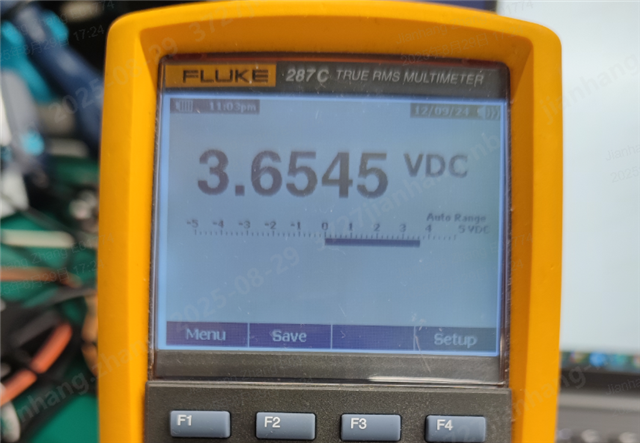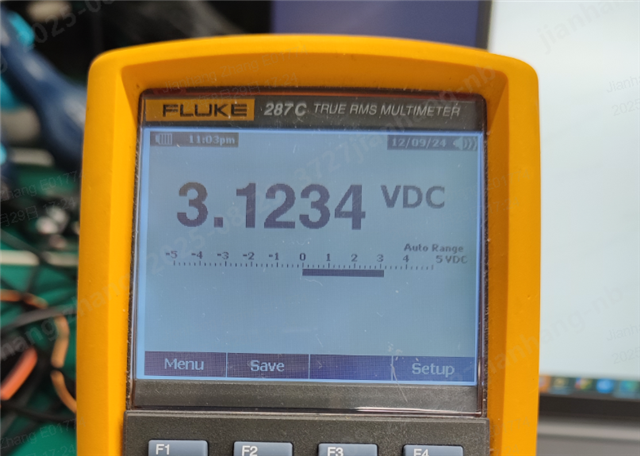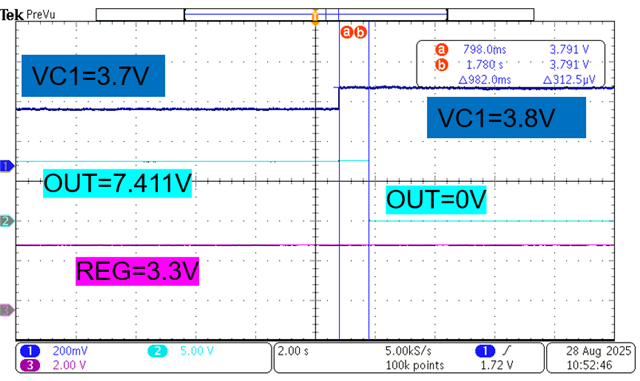Other Parts Discussed in Thread: BQSTUDIO
Tool/software:
Hi TI experts,
I've detected an issue with the bq76942. In a three-cell project, the cell overvoltage setting is 3643.2mV. I debugged the single-cell voltage in the first cell to 3652mV, which theoretically triggers a COV fault. However, the register status shows that only Safety Alert A is triggered, not the COV fault in Safety Status A. I need to adjust the single-cell voltage to close to 3670mV to trigger the COV fault in Safety Status A. I debugged only on the Bq host computer (Battery Management Studio) without connecting any other circuits. I tried disabling all Alert registers, but it didn't work. Could the AFE's low number of cell strings affect the accuracy of the single-cell voltage sampling? Please help me figure this out. Thank you.
